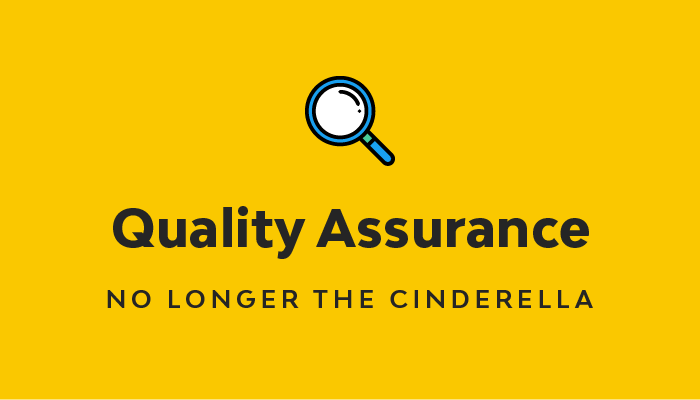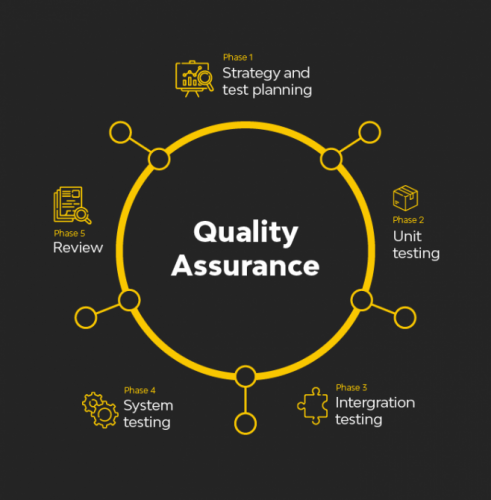
Once perceived as the Cinderella - the ‘poor relation’ - within development teams, the ubiquity and value of high performing digital solutions has put the role of quality assurance (QA) firmly in the spotlight. And is why QA is an integral part of our agency.
Here our Head of QA Lewis Counsell and Michelle Aguele, Test Analyst at Access, explain why we’ve created and are continuing to grow our in-house QA team and the role it plays within our delivery services.

Lewis, Head of QA

Michelle, Test Analyst
Lewis begins, “A highly skilled and efficient QA team should be an integral part of any digital agency, yet many have been slow on the uptake. In contrast, here at Access we’ve been ahead of the curve and have invested heavily in QA for a number of years. But this year, we have seen greater value in our QA services more than ever and have expanded the team as well as technology. We’re committed to being a leading light in this area.
“Consumers and B2B customers are demanding so much more from digital technology and this is why we place QA at the heart of every client brief, making the team an intrinsic part of the development process - from being involved at the briefing stage with key stakeholders and agreeing meaningful and measurable acceptance criteria, through to User Acceptance Testing (UAT) throughout the development lifecycle, providing continuous quality assurance and reducing risk and impact of the final client UAT stage.”
So what are Lewis and Michelle’s five key reasons that make QA so vital in today’s ever-demanding digital world?
Agile Working and Fast Fixes
“The development process has shifted significantly in the past 20 years. No longer are systems built in a waterfall model, with new releases ‘thrown over the fence’ to the QA team at the final stage, potentially resulting in costly and time consuming fixes. QA is now very much at the heart of agile working which demands ongoing iterations.
Similarly rapid turnaround of updates to fix issues, and the design and development of competition-beating functionality, is now the norm. Clients are demanding slick and seamless online solutions which can be updated and refreshed at pace – and the only way to do this is make QA integral to the process.
QA begins at pitch stage
As mentioned, even at the start of a client relationship - during the pitch process - we emphasise the role QA will have on our solutions. Before work commences, during the discovery and planning phase, the team agrees the criteria and specification for the scope of the project including server/environments and development flow, ticket states and workflow, definition of done and ug fix process flow. This provides clarity for all parties involved in the project and supports new people (internal and third parties) who might be onboarded during the project.

It saves money
We encourage our clients to be as invested in QA as we are, because we can show the budgetary value of identifying tests early and finding any issues in-house before sending projects out for customer User Acceptance Testing. This ensures that there is less ‘back and forth’ regarding issues and reduces the time and involvement for the customer UAT process.
Reducing risk
An in-house QA process can also reduce risk. Some clients may not have dedicated IT staff, so having a QA team with an in-depth understanding of the software development processes and direct contact with the development team, ensures that areas of risk that might not be apparent to the external user can be identified early. Regressions – bugs that creep into working areas of systems because of new software developments – can also be easily managed. QA teams can build up suites of tests that can be rerun on high value areas of projects to ensure existing functionality is not compromised.
Test automation brings efficiency
Underpinning the work of the wider QA team, we’ve expanded our test automation capabilities which provides quick, repeatable tests that reduce the time for completing test sets and ensure tests are performed in the same way. This improves the consistency and frequency at which tests set can be run in comparison to running the same sets manually. They can also be triggered automatically as part of the development build processes to ensure that fundamental functionality has not been compromised.
Our team here implements two levels of test automation. Developers utilise functionality of Behat testing to ensure that certain critical parts projects are built correctly and have key functionality even before the developers perform their unit tests. The QA team also implements code (using Java and Selenium Web driver) that mimics the interaction of users with critical parts of websites to ensure that these have not been compromised with any new release.
In conclusion, Michelle adds:
“So while we can show how greater use of QA and automated testing can add huge benefits, it’s not just delivering best practice that makes QA so important.
“In today’s digital landscape, not putting a robust QA process at the heart of digital development will result in a monumental digital #fail. An unreliable, unintuitive and clunky platform can quickly damage brand reputation and significantly impact sales.
“A thorough and integrated QA process means that websites are developed to the highest quality, which in turn can significantly improve brand satisfaction.”
If you want to understand more about our QA processes or are looking at some digital development yourself, then please do get in touch.








